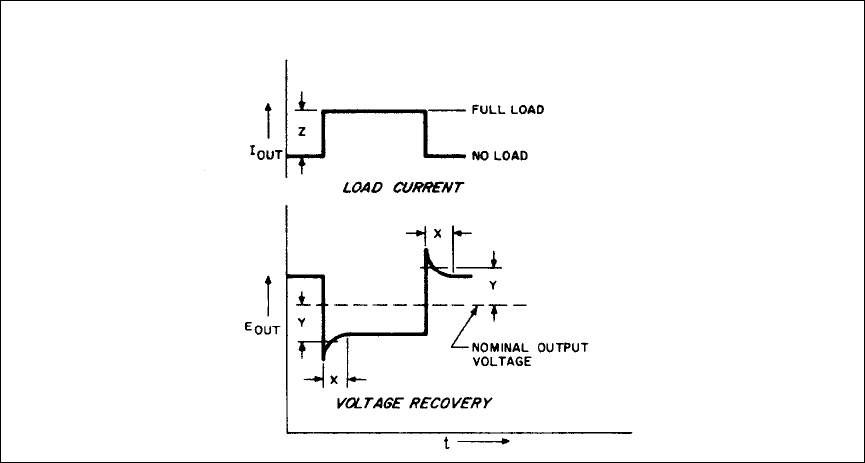
12
LOAD EFFECT (LOAD REGULATION)
Formerly known as load regulation, load effect is the change in the steady-state value of the dc output voltage
or current resulting from a specified change in the load current (of a constant-voltage supply) or the load
voltage (of a constant-current supply), with all other influence quantities maintained constant.
LOAD EFFECT TRANSIENT RECOVERY TIME
Sometimes referred to as transient recovery time or transient response time, it is, loosely speaking, the time
required for the output voltage of a power supply to return to within a level approximating the normal dc output
following a sudden change in load current. More exactly, Load Transient Recovery Time for a CV supply is the
time "X" required for the output voltage to recover to, and stay within "Y" millivolts of the nominal output
voltage following a "Z" amp step change in load current --where:
TRANSIENT RECOVERY TIME
(1) "Y" is specified separately for each model but is generally of the same order as the load regulation
specification.
(2) The nominal output voltage is defined as the dc level halfway between the steady state output voltage
before and after the imposed load change.
(3) "Z" is the specified load current change, typically equal to the full load current rating of the
OFF-LINE POWER SUPPLY
A power supply whose input rectifier circuits operate directly from the ac power line, without transformer
isolation.
OUTPUT IMPEDANCE OF A POWER SUPPLY
At any frequency of load change, ∆EOUT/∆IOUT. Strictly speaking, the definition applies only for a sinusoidal
load disturbance, unless the measurement is made at zero frequency (dc). The output impedance of an ideal
constant voltage power supply would be zero at all frequencies, while the output impedance for an ideal
constant current power supply would be infinite at all frequencies.
